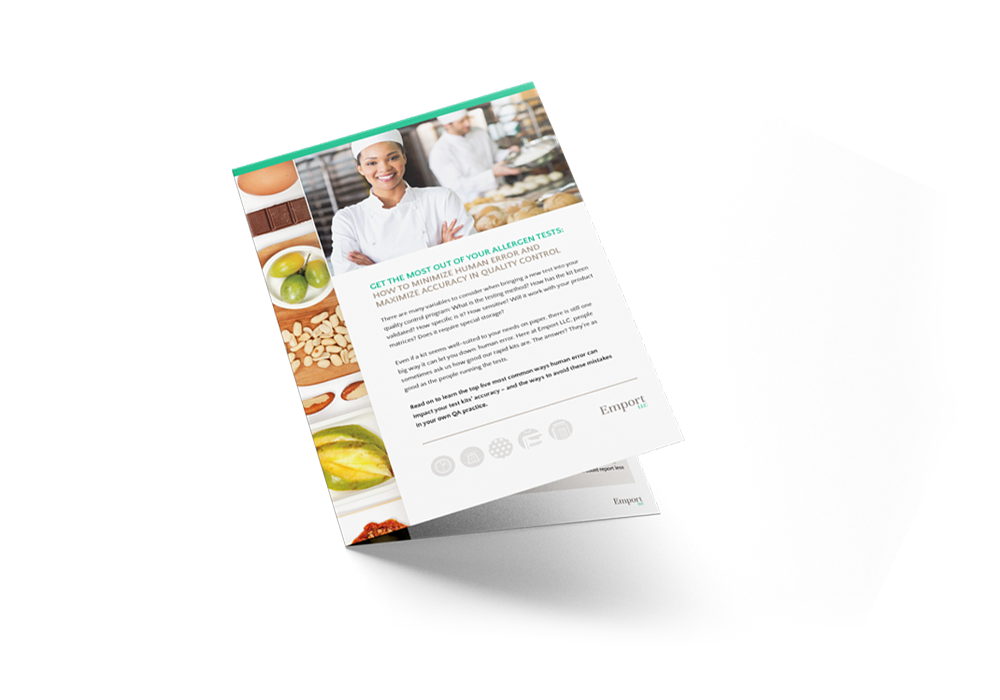So many customers are asking about allergens!
Your restaurant has been getting more customers with dietary restrictions, right? Whether you are delivering food to the customer via sit-down restaurants, university cafeteria settings or catered events, allergen concerns are informing what you serve. There’s a good reason; food allergies have been on the rise over the last two decades. So of course, more diners are selective of what they are ordering in restaurant and cafeteria settings.
“Food allergies affect an estimated 15 million persons in the United States and are responsible for approximately 30,000 emergency department visits and 150–200 deaths each year. Nearly half of fatal food allergy reactions over a 13-year period were caused by food from a restaurant or other food service establishment.” Read the study Restaurant Food Allergy Practices
How prepared are you to address your customers’ requests?
A customer that has a food allergy can react to incredibly small amounts of allergenic material. From front- to back-of-house, your staff should know what you are (and are not) prepared to do to make sure all of your customers enjoy their experience.
The face of your establishment
Customers can have many ways to communicate their needs. Some will call and talk to staff, some will verbally inform waitstaff when they arrive. Still others will have pre-printed cards, outlining their allergies. No matter how the request is communicated, it should be taken seriously.
It’s best to make sure that anyone with direct contact with the public understands how to address these requests. But, more importantly, your facility should have at least one person on site at all times that can answer any questions about ingredients and handling. Both front- and back-of-house staff should be encouraged to refer to this person anytime they are unsure of how to answer questions.
Behind the scenes: Is your kitchen equipped for allergen safety?
 Back-of-House will bear the brunt of putting your allergen plan into practice. From incoming deliveries to plating, your kitchen can have many vulnerabilities.
Back-of-House will bear the brunt of putting your allergen plan into practice. From incoming deliveries to plating, your kitchen can have many vulnerabilities.
Minimize potential cross-contact by bringing in allergen-laden ingredients in separate deliveries and funneling them into your storage system safely.
Use separate areas and utensils for preparing allergen-free dishes. Color-coded cutting boards, spatulas, bowls etc. are readily available. Your prep- and cook-lines can be trained to use ONLY those specific color-coded utensils. For instance, gluten-free foods are only prepared using blue utensils.
Storage can sometimes have unexpected consequences. It’s best to treat your storage the same as prep areas and make sure there is separation between allergen-carrying ingredients.
You may want to limit which allergens you address in your menu. Let’s face it, there are a lot of food allergens. It’s not always possible to safely prepare food free from all allergens alongside your regular menu items. This can be especially difficult in a really small kitchen. One solution is to pick your battle, and concentrate on keeping your establishment free from a limited number of allergens. Allergens can sneak in in unexpected places: watch for food allergens in your condiments and other prepared ingredients like sauces and spice blends!
Does your restaurant provide allergen information on your menus? If you do, then it’s crucial that your kitchen- and wait-staff are familiar with the ingredients for your menu items.
Fun fact! Validation is the means of proving that your cleaning program does in fact work, when it is done properly. Additional validation is warranted when there are changes to your ingredients, processes, environment, or team. Verification is the day-to-day proof that your plan is working under its original parameters.
Are there tools available to help ensure allergen-free dishes are truly allergen-free? Of course!
Protein testing (for surfaces)
Effective, easy, and widely used in food production, general protein swabs, like AllerSnap, check for the presence of any type of protein on a surface. They can help you confirm that your surfaces or kitchen tools are truly clean, and safe for use preparing foods for an allergic customer. These surface tests do not differentiate between protein from nuts, meats, dairy, etc. – any protein will trigger a reaction. General protein swabs are less sensitive than allergen-specific tests, but they are also much less expensive. This makes them a good addition to a food safety program, especially when it comes to verifying that cleaning has taken place.
Allergen-specific testing
Unlike AllerSnap or other general protein swabs, specific allergen tests are designed to react to very small amounts of very specific allergen proteins. AlerTox Sticks kits are available for nine food allergens, and GlutenTox is specifically designed to detect gluten. A kit designed to detect peanut will “ignore” protein from milk or soy or chicken. They are almost always more sensitive than general allergen swabs. This makes them the superior choice for higher risk situations and also for program validation.
So You Know: The difference between cross-contact and cross-contamination
Cross-contamination is a common factor in the cause of foodborne illness, and proper cooking of the contaminated food in most cases will reduce or eliminate the chances of illness. For allergen cross-contact, cooking does not reduce or eliminate the risk. A person with a food allergy will have a reaction to the food whether it has been cooked or not.
Want to learn more?
Read our article outlining the differences between protein and allergen testing
Surface testing for food safety: What is the difference between Allergen Testing and ATP Testing?
Environmental Health Specialists Network (EHS-Net)
Food Allergy Knowledge and Attitudes of Restaurant Managers and Staff: An EHS-Net Study


